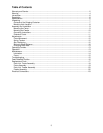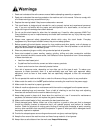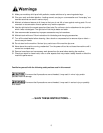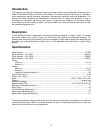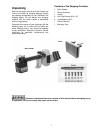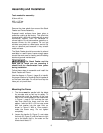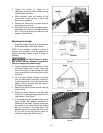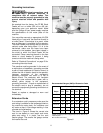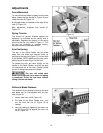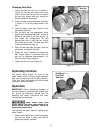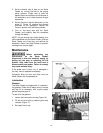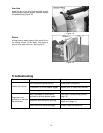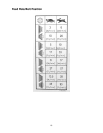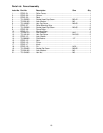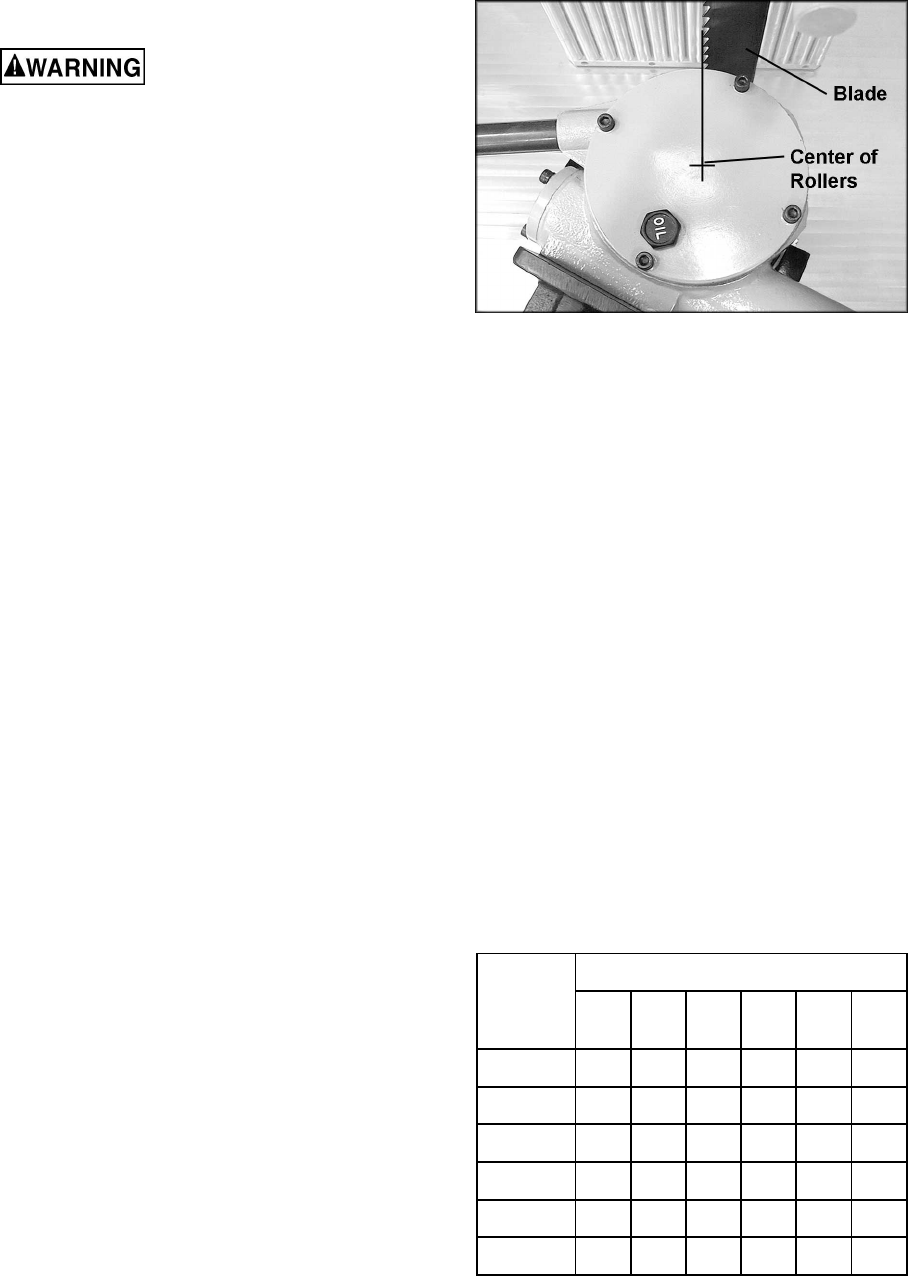
11
Grounding Instructions
Electrical connections must
be made by a qualified electrician in
compliance with all relevant codes. This
machine must be properly grounded to help
prevent electrical shock and possible fatal
injury.
As received from the factory, the PF-BS Stock
Feeder will run on either 230 volt or 460 volt,
depending upon your particular model. Make
sure the voltage of your power supply matches
the specifications on the motor plate of the
machine.
You may either connect an appropriate UL/CSA
listed plug or “hard-wire” the machine directly to
a control panel. If hard-wired to a panel, make
sure a disconnect is available for the operator.
The Stock Feeder must comply with all local and
national codes after being wired. If it is to be
hard-wired, make sure the fuses have been
removed or the breakers have been tripped in
the circuit to which the Stock Feeder will be
connected. Place a warning placard on the fuse
holder or circuit breaker to prevent it being
turned on while the machine is being wired.
Refer to “Electrical Connections” on page 23 for
connecting the motor leads.
This machine must be grounded. In the event of
a malfunction or breakdown, grounding provides
a path of least resistance for electric current, to
reduce the risk of electric shock to the operator.
Improper connection of the equipment-
grounding conductor can result in a risk of
electric shock. The conductor, with insulation
having an outer surface that is green with or
without yellow stripes, is the equipment-
grounding conductor. If repair or replacement of
the electric cord or plug is necessary, do not
connect the equipment-grounding conductor to a
live terminal.
Repair or replace a damaged or worn cord
immediately.
Extension Cords
If an extension cord is necessary make sure the
cord rating is suitable for the amperage listed on
the machine's motor plate. An undersize cord
will cause a drop in line voltage resulting in loss
of power and overheating.
The chart in Figure 9 shows the correct size
cord to use based on cord length and motor
plate amp rating. If in doubt, use the next
heavier gauge. The smaller the gauge number
the heavier the cord.
Figure 8
Recommended Gauges (AWG) of Extension Cords
Extension Cord Length *
Amps
25
feet
50
feet
75
feet
100
feet
150
feet
200
feet
< 5 16 16 16 14 12 12
5 to 8 16 16 14 12 10 NR
8 to 12 14 14 12 10 NR NR
12 to 15 12 12 10 10 NR NR
15 to 20 10 10 10 NR NR NR
21 to 30 10 NR NR NR NR NR
*based on limiting the line voltage drop to 5V at 150% of the
rated amperes.
NR: Not Recommended.
Figure 9



